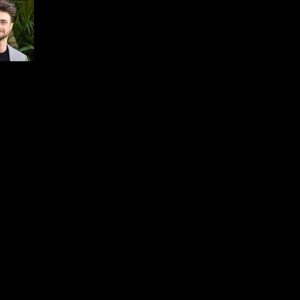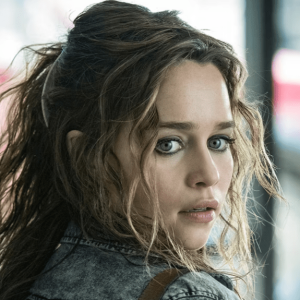More Than a Lasso: Unpacking the Power and Nuance in Gal Gadot's Wonder Woman
By [Your Name]
Published [Today’s Date]
When Gal Gadot first stormed the big screen as Diana Prince in Batman v Superman: Dawn of Justice, she did more than make a cameo—she made history. With charisma, strength, and undeniable screen presence, the Israeli actress captured the hearts of fans across the world and revitalized one of DC Comics' most iconic superheroes. But let's get one thing straight—Gadot’s Wonder Woman is more than just a goddess with a Lasso of Truth. She's a cultural reset, a feminist icon, and a cinematic powerhouse wrapped in steel and sincerity.
So what makes Gal Gadot's take on Wonder Woman such a pop culture moment? Let’s dive into the nuance, the power, and yes, the WOMAN behind that shield.
A Modern-Day Warrior With Heart
In a cinematic universe overflowing with brooding caped crusaders and morally gray anti-heroes, Gadot’s Diana Prince delivers something refreshing: clarity, hope, and genuine compassion. She fights with conviction, not cynicism. She leads not by intimidation, but by example. And let’s be real: that’s rare in today’s superhero storytelling.
From the beaches of Themyscira to the trenches of World War I (Wonder Woman, 2017), Gadot’s portrayal refuses to conform to dated superhero tropes. She isn’t just a muscle-bound vigilante in heels—she's layered, emotionally intelligent, and unapologetically feminine. And that matters.
The Feminist Flagbearer of the DCEU
While it’s easy to reduce Wonder Woman to her action scenes (hello, No Man’s Land scene—still iconic!), her significance transcends choreography. The character stands as a symbol of female empowerment, and Gadot’s performance elevates that message without tipping into melodrama or cliché.
Directed by Patty Jenkins, the solo Wonder Woman film broke barriers in 2017, raking in over $800 million globally and becoming the highest-grossing film ever directed by a woman at the time. And it wasn’t just the numbers that impressed—it was the storytelling.
Wonder Woman told a story of strength through empathy. Diana is as likely to extend a hand as she is to throw a punch. That shift was major.
Gal Gadot Didn't Just Play Wonder Woman—She Became Her
Let’s get this straight: casting Gadot sparked controversy when announced. Critics complained that she wasn’t curvy enough, tall enough, or battle-hardened enough. But she proved all the haters wrong with sheer talent, rigorous training, and dedication to the role. And since then, she’s defined the character in the modern era more than anyone else.
Gadot brings authenticity to Diana, largely because she's a real-life wonder woman herself. From serving in the Israeli Defense Forces to being a dedicated mother and advocate for human rights, she mirrors much of the strength and elegance she brings to screen. Not to mention, she reportedly did many of her own stunts. Total boss energy.
Wonder Woman 1984: A Bold and Risky Sequel
While Wonder Woman 1984 may have come with mixed reviews, there’s no denying that it swung for the fences. Bright, bold, and retro-stylized, the sequel tackled themes of wish-fulfillment, the cost of power, and self-sacrifice. Though it lacked some of the razor-sharp storytelling of the original, it provided another rich layer to Diana’s evolution.
Even when the script faltered, Gadot stayed compelling. Whether navigating a long-lost love or facing the morally complex villainy of Max Lord and Cheetah, she offered a grounded emotional performance. That’s nuance—you don’t get that in every cape-and-cowl flick.
Culturally Iconic—Online and IRL
Thanks to platforms like TikTok, Instagram, and Twitter (X?), Gal Gadot’s Wonder Woman continues to dominate trending hashtags and viral moments. From cosplay to fan art to political slogans (“What would Wonder Woman do?”), she’s ignited a fandom that spans ages and demographics.
Pop culture moments like her quiet strength in Zack Snyder’s Justice League or her team-building dynamic in the theatrical version are constantly resurfacing online, keeping fans engaged long after each premiere. Let's not forget that post-pandemic, she even used her Wonder Woman cred to spark global conversations—like that (infamous?) “Imagine” video. Hey, even icons misstep—but it just shows how big her platform really is.
What’s Next for Wonder Woman—and Gal Gadot?
Following the DCEU’s shakeup and James Gunn and Peter Safran’s new vision under DC Studios, fans are anxiously refreshing their feeds to see whether Gal Gadot’s version of Wonder Woman will live on in a rebooted universe.
In August 2023, Gadot hinted that she’s actively working with DC on a third Wonder Woman film. “From what I heard from James and from Peter is that we're gonna develop a Wonder Woman 3 together,” she told ComicBook.com. DC has yet to make an official announcement, but it sounds like Diana Prince might just rise again.
Until then, one thing’s for sure: Gal Gadot’s impact is already cemented. She helped redefine what female superheroes can look like—layered, human, powerful, and kind.
Final Thoughts: Why She Still Reigns Supreme
Gal Gadot’s Wonder Woman is more than just a superhero. She’s a symbol of resilience, justice, and emotional intelligence. Whether she’s deflecting bullets with her gauntlets or engaging in soul-baring conversations, she reminds us what true strength looks like.
She’s shattered glass ceilings, dodged unrealistic beauty standards, and pulled us all in with a quiet confidence that doesn’t need to scream to be heard. That’s power. That’s nuance. And that’s why she’ll always be more than just a lasso-wielding icon—she is THE Wonder Woman of our generation.
Stay tuned, because this warrior’s story? It’s far from over.
—
For more on DC’s future, Gal Gadot, and behind-the-scenes superhero scoop, bookmark this page and follow us on all the socials. You won’t want to miss what’s next.

